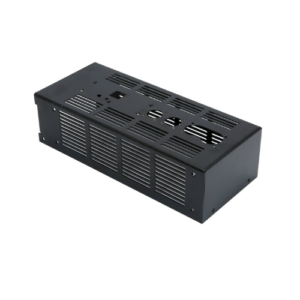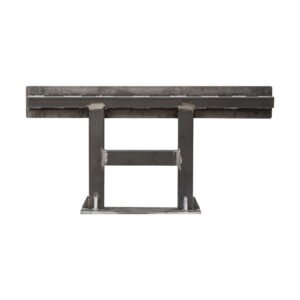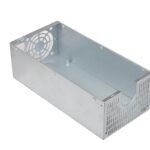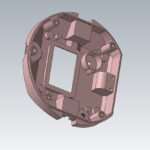Introduction
Are you designing for custom metal fabrication? There’s a lot of work cut out for you. However, you can make things easier if you follow the best practices and tips while optimizing the design for fabrication. After all, your custom metal fabrication design will impact the end result, i.e., the product. To keep things simple, you should focus on time, cost, durability, and other factors while optimizing the custom metal fabrication design. In this post, we will dive into the world of custom fabrication design and shortlist nine tips that will ensure that a piece of design successfully translates into the desired metal product.
1.Work with the right fabricator
Assuming that you don’t own a metal fabrication service or workshop, we suggest you spend time finding the right metal fabrication expert or service provider. Indeed, this is quite challenging because every service provider claims to be the best. Here’s what you need to remember. Work only with a fabricator that has enough experience, provides excellent customer service, and has the necessary good-quality tools. We suggest you go for a metal fabricator that delivers designing services and in-house engineering. Such fabricators are known for providing valuable recommendations and design input as they understand what you require from them. In other words, working with the right fabricator will ensure the production of a high-quality and functioning metal product.
2.Choose the right material manufacturer
We cannot press more on the fact that material selection impacts the entire custom metal fabrication process. Not just that, it also affects the design and quality of the project. Therefore, you should know where to purchase the best materials for your product. We suggest you contact metal fabricators as they will help you connect with a local metal manufacturer/supplier. These local manufacturers often provide a wide range of materials to choose from for fabrication purposes. They will provide the required quality and offer the best prices.
3.Keep the design specific
Remember: Never confuse the fabricator. The only way you can ensure that the fabricator understands everything you need from the process is by specifying the design to perfection. This simple move can reduce a significant amount of errors in the end product, i.e., when the design moves onto fabrication. Make everything crystal clear on the design specification page. So, what should you include when specifying the design configuration? We highly recommend double-checking your design specification for tolerances, locations of holes, depth of holes, surface flatness, the radius of corners, material thickness, and overall height/width/length. Most importantly, mention the accurate measurements on the drawing.

4.Simplify the design down to essentials
So, you have clearly marked the drawing and specified the instructions you want the fabricator to follow. Your job doesn’t end here. It’s time to simplify the design to make sure you include only essential elements. Therefore, the next step in optimizing the custom metal fabrication design is to simplify. This editing step will make you look at the design more closely before pushing it to your fabricator. So, what are you looking for here? Identify the elements that don’t add to the function of your design. Do you really need to add or specify the aesthetic elements? You should also look out for elements that are redundant and ambiguous. For example, you don’t need two holes in the design if one hole gets the job done. Adding another hole might add unnecessary expense. Also, make sure you don’t over-detail on the drawing sheet.
5.Choose the right metal alloy
Take your time to choose a suitable metal or metal alloy for your project. Since experts recommend using metal alloys, we will focus on selecting the right metal alloy option that fits your project needs. Materials will impact the cost, design, and fabrication processes required for the project. You will also have to consider whether or not the fabricator has adequate machinery to work on the material. One should have a clear idea of where the end product will be used. The information will help determine the properties the product should possess. In other words, you’d want to use a material that can withstand the environment where the product is used. Ideally, you will want to use a metal alloy that has high durability and can resist corrosion, temperature extremes, and intense force. At the same time, you will want to purchase the metal alloy cheaply to keep the product cost low.

6.Choose right manufacturing way for metal fabrication
We highly recommend learning about different fabrication processes before you present the custom design to the fabricator. If you are designing for a small project, you can go for CNC cutters or metal printing since these are cheaper and quicker to process. While CNC machines provide the best precision, metal printing will help create unique shapes. Using laser technologies for fabrication might result in material wastage. Here are a few basic CNC based fabrication processes:
- Punching
This fabrication technique is primarily used to create a hole in the sheet metal. The material is placed between a punch and a die – both having the same shape.
- Cutting
Cutting tools like plasmas, lasers, water jets, or tin snips are used to perform metal fabrication. This is the most critical process since it is quite challenging to achieve the set design without cutting the sheet metal.
- Roll forming
This process in custom fabrication involves continuous bending of long strip metal in order to create the desired cross-section. Roll forming is useful in waste reduction and can leverage coil-fed processing.
- Bending
Bending involves the use of press brakes. The sheet is bent into the desired V, channel, or U shape.
- Stamping
Stamping involves the use of male and female dies that allow the fabricator to shape the metal sheet.
7.Collaborate with fabricator
Do you know what the ideal fabrication process looks like? Do you know if the simplified or optimized design will help the fabricator get the job done? Well, it’s time to throw the guesswork out of the window and work with the fabricator. Involve the metal fabricator in the early design process. Talk to your fabricator and ask for feedback on the design. Discuss the different fabrication processes (cutting, welding, machining, stamping, casting) and determine the processes your design needs. The fabricator will help you make small changes to your design, allowing you to simplify the overall fabrication process further! Such changes will eventually move your project through the most efficient fabrication processes.
8.Consider metal finishing options
Most of our customers believe that the right material choice is the backbone of a successful custom metal fabrication process. This cannot be further from the truth. Indeed, the choice of material is crucial. But, the custom metal fabrication process is incomplete without the proper finishing. Several finishing options are available for a custom metal fabrication product. You can use powder coating, metal plating, anodizing, galvanizing, and other finishing methods to make your product corrosion-resistant and durable. Moreover, correct finishing will give the product the right color, texture, and shine.

9.Test before mass production
Deal with the custom fabrication design process with patience since several things can go wrong during the process. Most importantly, you should spend time testing the design before pushing it towards production. Most custom metal fabrication designs function well in theory or on paper. However, they fail miserably in real-world conditions. Therefore, we recommend testing the design to figure out whether or not the product meets the specifications. Testing will help understand if the design successfully translates into the desired product. All you have to do is ask the fabricators to provide prototypes and 3D models of the product before production.
Keeping reading!
We all know how intricate a process optimizing the design for metal fabrication is. Therefore, complacency might lead to blunders that will force you to redesign the fabrication altogether. We suggest you use the right tools, skills, and hands-on expertise to create a useful design for metal fabrication. Most importantly, you should follow the nine tips and practices mentioned above. Lastly, we highly recommend working with experts that know what they are doing. Did you find this metal fabrication design guide useful?
Let us know in the comments. Also, don’t forget to read other informative posts on the blog!
Related Articles:
- Guidelines to Follow During Laser Cutting Product Design
- Why You Should Consider Fire-resistant Plastics in Your Part Designs
- Design for Assembly and Its Applications in Product Manufacturing
- How to Design Living Hinge in Manufacturing?
- Sheet Metal Enclosure Design: Key Enclosure Design Tips!
- How to Design a Waterproof Enclosure in Manufacturing?




